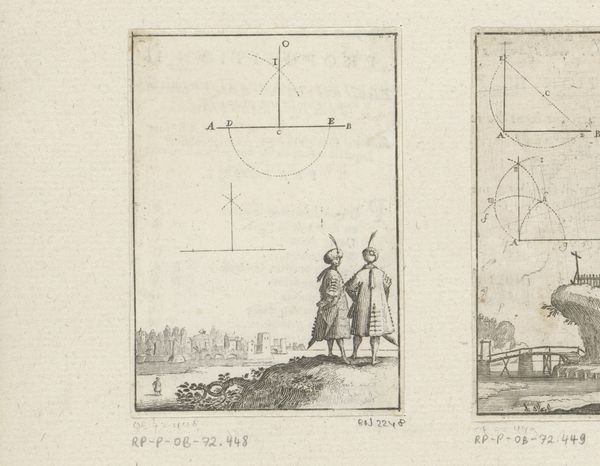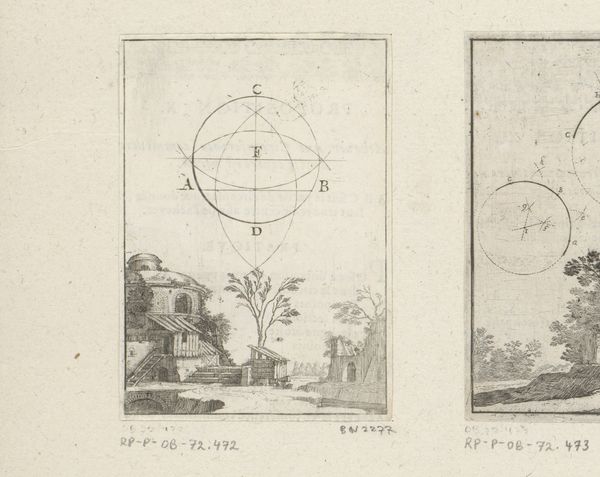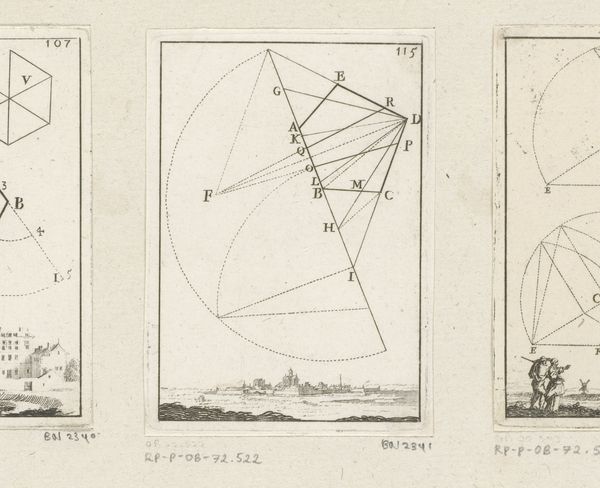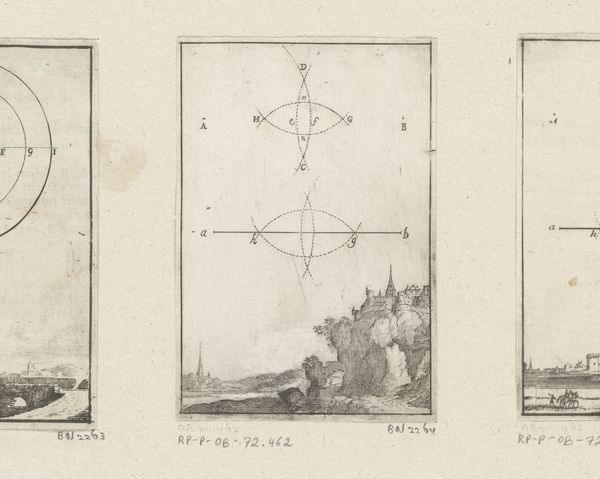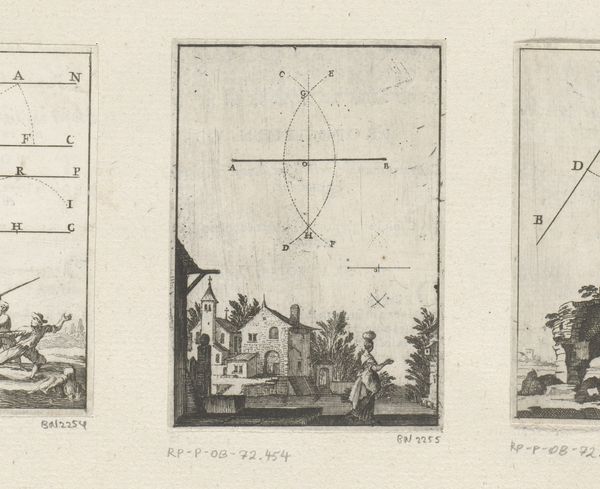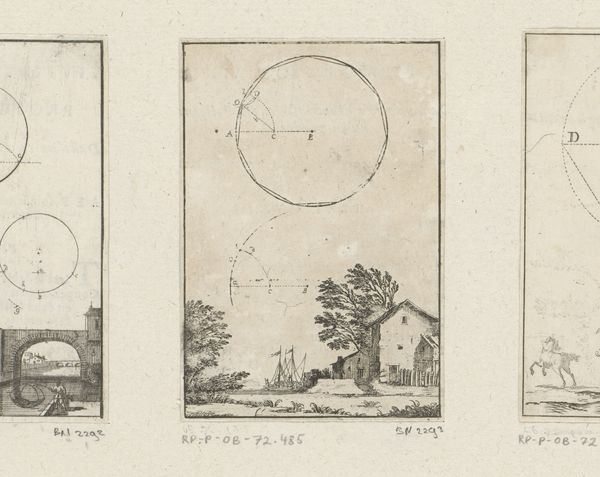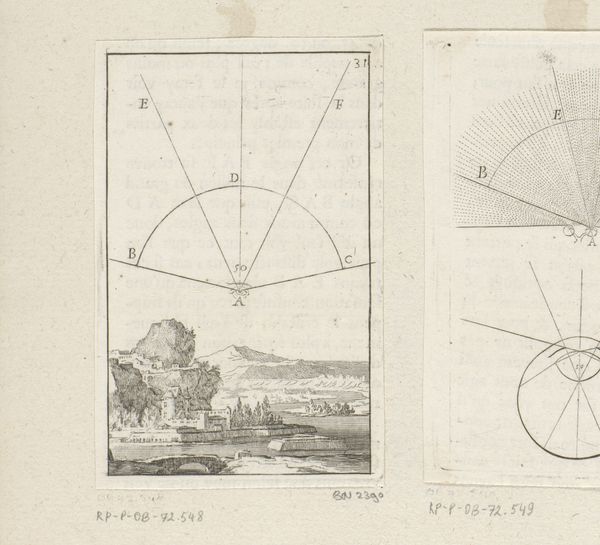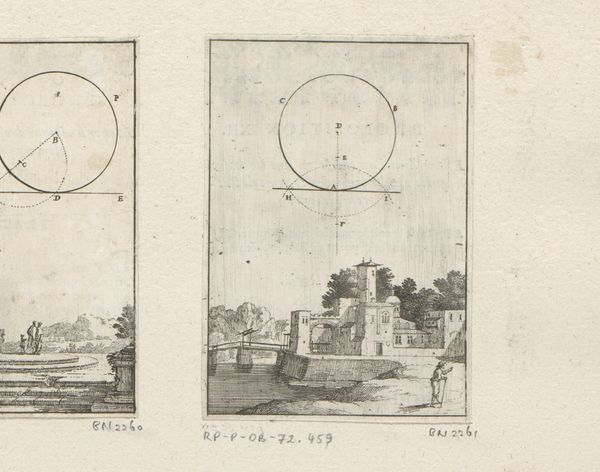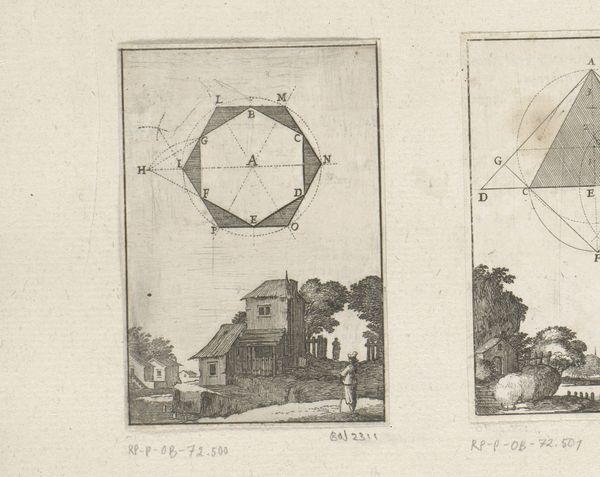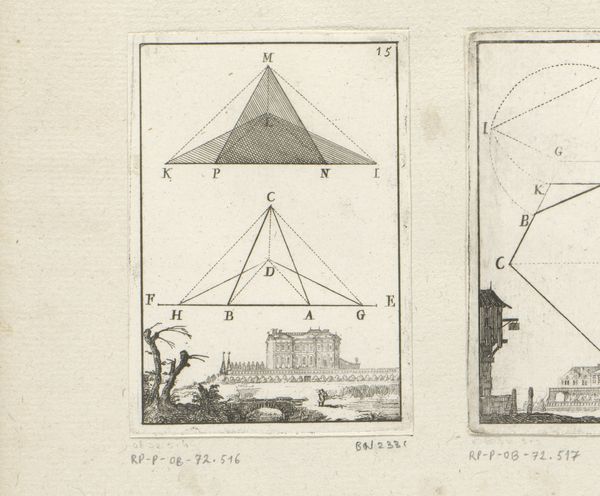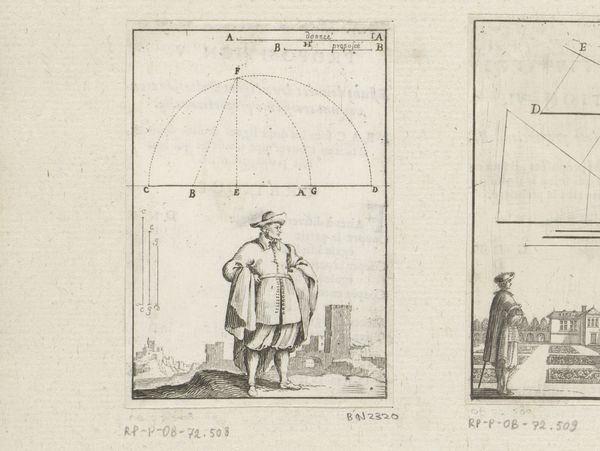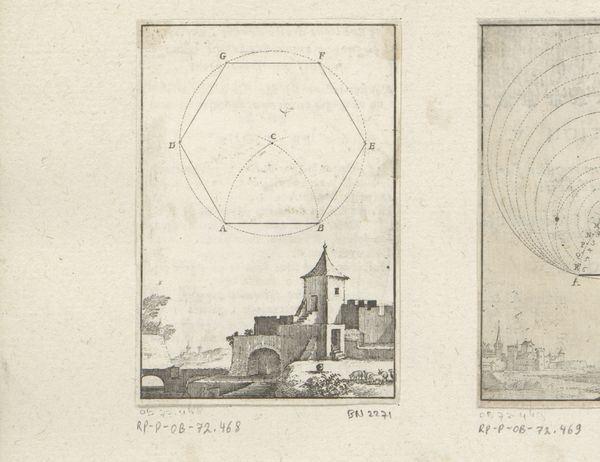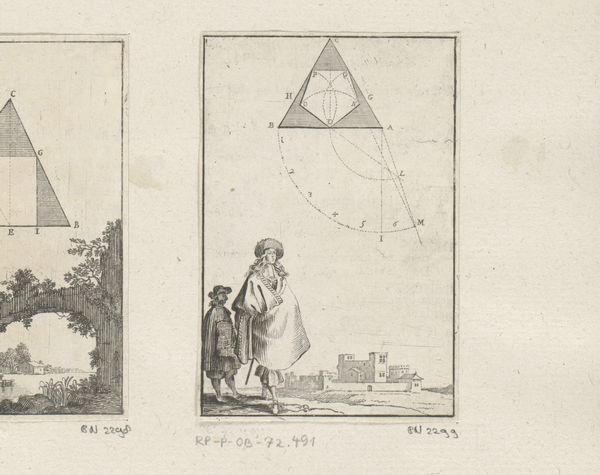
Geïsoleerd stuk uit een cirkel met onderaan een man in een stad 1669
0:00
0:00
drawing, print, etching, engraving
#
drawing
#
comic strip sketch
#
aged paper
#
quirky sketch
#
baroque
#
dutch-golden-age
# print
#
etching
#
sketch book
#
perspective
#
figuration
#
personal sketchbook
#
idea generation sketch
#
sketchwork
#
line
#
sketchbook drawing
#
cityscape
#
genre-painting
#
storyboard and sketchbook work
#
sketchbook art
#
engraving
Dimensions: height 93 mm, width 65 mm
Copyright: Rijks Museum: Open Domain
Curator: SÉbastien Leclerc I created this etching, "Isolated piece from a circle with a man in a city at the bottom," in 1669. It resides here at the Rijksmuseum. It strikes me as an exploration of perspective. Editor: Immediately, I'm drawn to the almost diagrammatic quality. It feels like a bridge between art and science, reflecting a society grappling with new understandings of space and the world. Curator: Precisely. Leclerc, trained as an engineer, brings a technical sensibility to his artistic practice. The printmaking process itself would require precision—consider the labour and skill in transferring these geometric concepts onto the plate. The means of reproducing the image allowed for wider dissemination of this idea of proportion. Editor: And who had access to that dissemination? The man depicted observing the diagram is a figure of privilege, set against the backdrop of the cityscape with a populace dwarfed in the frame. This immediately creates a dialogue with the social hierarchies of the 17th century. Curator: The print is an engraving and etching, giving it that distinct linear quality. The use of line defines the circle and triangle diagrams, as well as the depiction of the man and cityscape, which reminds us that making accurate perspective involved careful processes. This connects artistic and technical practice. Editor: That tension is key. How did power shape the production of knowledge? Whose perspectives were centered, and whose were marginalized? Curator: The very format also points toward idea generation and sketching, with the plate arranged in two different concept examples. Consider also the context of Dutch Golden Age art, the burgeoning merchant class, their wealth dependent on trading practices where a grasp of geometry was useful, shaping global perspectives. Editor: Right, by examining those interplays we reveal that Leclerc’s work isn't merely about representing the world; it reflects power structures and the construction of perception itself, made material through this specific print. Curator: An intriguing fusion of skill and material shaping ideas! Editor: Absolutely. The print invites reflection on how what we think we know about our environment is shaped.
Comments
No comments
Be the first to comment and join the conversation on the ultimate creative platform.

